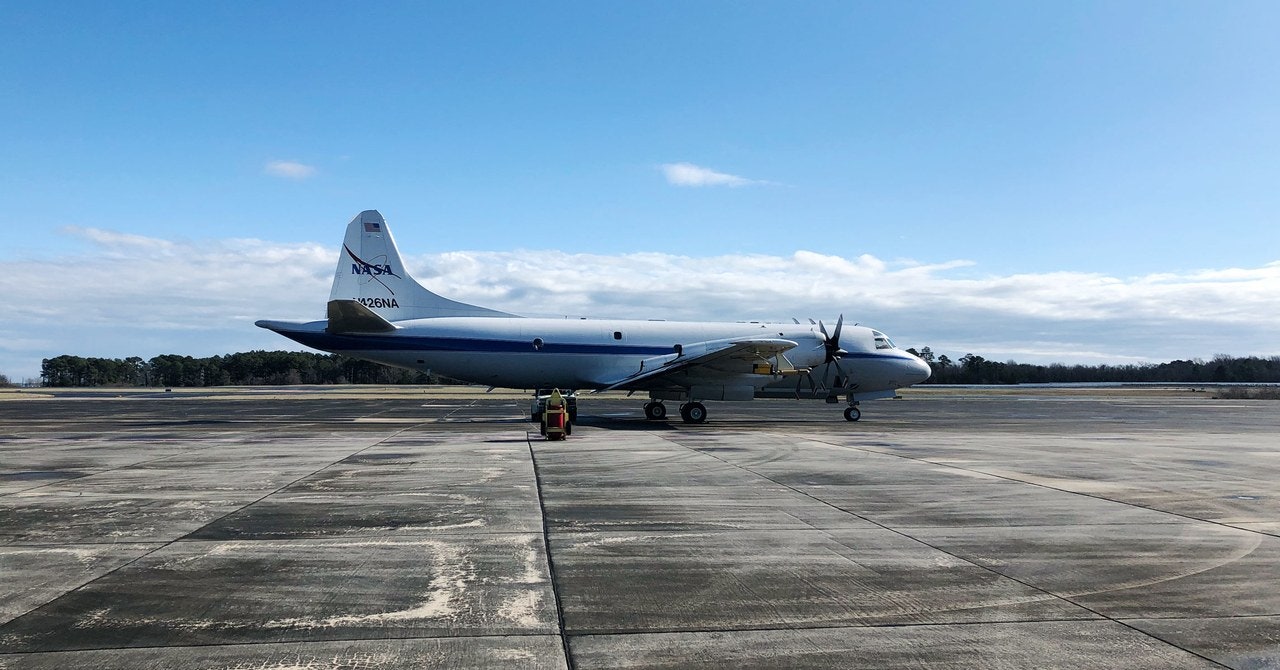Inside a cavernous hangar at NASA’s Wallops Flight Facility along the Virginia coast, a gleaming white P-3 Orion aircraft sits parked under harsh floodlights. It’s just after midnight and a group of scientists, technicians and graduate students cluster underneath a wing, peering at a 5-inch crack in one of the ailerons that the pilot uses to maneuver the plane.
Their disappointment is palpable. The eight-person team was preparing to board the research aircraft for a 10-hour flight through a massive snowstorm stretching across upstate New York and Canada as part of a new project funded by NASA to dissect the inner workings of winter storms. The researchers want to know how the bands of snow form, why some storms produce snow and others don’t, and why certain conditions lead to ice crystals, while others cause snowflakes. Their ultimate goal is better winter forecasts for the 55 million residents of the Northeast, and improved weather models that can be used for the rest of the US. NASA has dubbed the three-year study IMPACTS, or the Investigation of Microphysics and Precipitation for Atlantic Coast-Threatening Snowstorms.
But tonight’s scientific expedition into the heart of the storm is now canceled. The crack—possibly caused by hitting a bird or other object on the previous flight—will take a few days to repair. It takes a few minutes to sink in, but after a few glum jokes about the bird, the team shuffles out of the hangar and into two windowless rooms, plugs in their laptops and readies for a night of number-crunching data from satellites and a second aircraft, instead.
Lynn McMurdie, principal investigator for the project and an atmospheric scientist at the University of Washington, spent several years assembling her research team from universities and NASA’s Goddard Space Flight Center. She won a competitive NASA grant and moved her lab to the remote Wallops Flight Facility near Chincoteague Island, Virginia. Imagine being a scientist who studies snowstorms and your project kicks off during one of the warmest winters on record. Then the plane breaks.
“It has made us all frustrated,” says McMurdie. “That’s one thing about an airborne mission: We can go where airplanes go and we go where there are storms. Even if it’s raining at the surface, it’s different above. So we have been able to make lemonade out of lemons.”
Not counting this night’s grounded flight, McMurdie and colleagues have flown on 12 trips since the beginning of January. While that may seem like a lot, it’s actually about half of what they expected. There just haven’t been very many storms this year. NOAA officials say the 2019-2020 winter, which officially stretches from December to February, is on track to be one of the warmest ever, although the amount of snowfall has varied by region. The Eastern United States is lining up to have the one of the top 10 least snowy winters in the past 126 years, according to a databa

